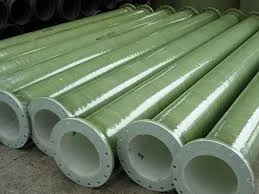
-
 Afrikaans
Afrikaans -
 Albanian
Albanian -
 Amharic
Amharic -
 Arabic
Arabic -
 Armenian
Armenian -
 Azerbaijani
Azerbaijani -
 Basque
Basque -
 Belarusian
Belarusian -
 Bengali
Bengali -
 Bosnian
Bosnian -
 Bulgarian
Bulgarian -
 Catalan
Catalan -
 Cebuano
Cebuano -
 China
China -
 China (Taiwan)
China (Taiwan) -
 Corsican
Corsican -
 Croatian
Croatian -
 Czech
Czech -
 Danish
Danish -
 Dutch
Dutch -
 English
English -
 Esperanto
Esperanto -
 Estonian
Estonian -
 Finnish
Finnish -
 French
French -
 Frisian
Frisian -
 Galician
Galician -
 Georgian
Georgian -
 German
German -
 Greek
Greek -
 Gujarati
Gujarati -
 Haitian Creole
Haitian Creole -
 hausa
hausa -
 hawaiian
hawaiian -
 Hebrew
Hebrew -
 Hindi
Hindi -
 Miao
Miao -
 Hungarian
Hungarian -
 Icelandic
Icelandic -
 igbo
igbo -
 Indonesian
Indonesian -
 irish
irish -
 Italian
Italian -
 Japanese
Japanese -
 Javanese
Javanese -
 Kannada
Kannada -
 kazakh
kazakh -
 Khmer
Khmer -
 Rwandese
Rwandese -
 Korean
Korean -
 Kurdish
Kurdish -
 Kyrgyz
Kyrgyz -
 Lao
Lao -
 Latin
Latin -
 Latvian
Latvian -
 Lithuanian
Lithuanian -
 Luxembourgish
Luxembourgish -
 Macedonian
Macedonian -
 Malgashi
Malgashi -
 Malay
Malay -
 Malayalam
Malayalam -
 Maltese
Maltese -
 Maori
Maori -
 Marathi
Marathi -
 Mongolian
Mongolian -
 Myanmar
Myanmar -
 Nepali
Nepali -
 Norwegian
Norwegian -
 Norwegian
Norwegian -
 Occitan
Occitan -
 Pashto
Pashto -
 Persian
Persian -
 Polish
Polish -
 Portuguese
Portuguese -
 Punjabi
Punjabi -
 Romanian
Romanian -
 Russian
Russian -
 Samoan
Samoan -
 Scottish Gaelic
Scottish Gaelic -
 Serbian
Serbian -
 Sesotho
Sesotho -
 Shona
Shona -
 Sindhi
Sindhi -
 Sinhala
Sinhala -
 Slovak
Slovak -
 Slovenian
Slovenian -
 Somali
Somali -
 Spanish
Spanish -
 Sundanese
Sundanese -
 Swahili
Swahili -
 Swedish
Swedish -
 Tagalog
Tagalog -
 Tajik
Tajik -
 Tamil
Tamil -
 Tatar
Tatar -
 Telugu
Telugu -
 Thai
Thai -
 Turkish
Turkish -
 Turkmen
Turkmen -
 Ukrainian
Ukrainian -
 Urdu
Urdu -
 Uighur
Uighur -
 Uzbek
Uzbek -
 Vietnamese
Vietnamese -
 Welsh
Welsh -
 Bantu
Bantu -
 Yiddish
Yiddish -
 Yoruba
Yoruba -
 Zulu
Zulu
Optimized FRP Desalination Pipes and Fittings for Enhanced Water Treatment Efficiency
The Future of Water Treatment FRP Desalination Pipes and Fittings
As the global demand for fresh water continues to escalate due to population growth and climate change, innovative solutions are implemented to address the critical water scarcity issues faced by many regions worldwide. One of the most promising advancements in water treatment technology is the use of Fiber-Reinforced Plastics (FRP) in desalination processes. FRP desalination pipes and fittings not only enhance the efficiency of water treatment systems but also offer numerous benefits that contribute to sustainable resource management.
Understanding the Need for Desalination
Desalination—the process of removing salt and other impurities from seawater to produce fresh water—has emerged as a vital alternative for regions that are severely limited in freshwater resources. Traditional desalination methods are often plagued by inefficiencies, high energy consumption, and substantial operational costs, highlighting the need for better materials and technologies that can improve the overall efficacy of these systems.
Advantages of FRP Material
FRP is a composite material, typically made from a polymer matrix reinforced with fibers (such as glass or carbon). This combination results in a lightweight yet exceptionally strong product, making it particularly well-suited for water treatment applications. The primary advantages of using FRP in desalination processes include
1. Corrosion Resistance One of the significant challenges in desalination is the corrosive nature of the seawater environment. Traditional metal pipes often suffer from rapid deterioration, leading to leaks and frequent replacements. In contrast, FRP exhibits excellent resistance to corrosion, which prolongs the lifespan of the piping system and reduces maintenance costs.
2. Lightweight and Ease of Installation FRP pipes are substantially lighter than their metallic counterparts, making transportation and installation significantly easier and less labor-intensive. This trait is particularly beneficial for offshore desalination plants where heavy materials can pose logistical challenges.
3. Thermal Insulation Desalination processes often require precise temperature control. The low thermal conductivity of FRP materials helps maintain desired temperatures within the pipes, improving overall energy efficiency during the desalination process.
frp desalination pipes and fittings for efficient water treatment ...

4. Flexibility in Design FRP can be produced in various shapes and sizes, allowing engineers and designers to customize solutions that fit specific project requirements. This flexibility is crucial for optimizing pipeline layouts in large-scale desalination plants.
Integration of FRP in Desalination Systems
Incorporating FRP pipes and fittings into desalination systems can significantly impact water treatment efficiency. For instance, the use of FRP fittings minimizes pressure loss and enhances flow rates, thus optimizing the energy consumption of the entire system. This improved hydraulic performance is essential for reducing operational costs and making desalination a more economically viable solution for producing fresh water.
Moreover, the lightweight nature of FRP facilitates easier retrofitting of existing systems. As water scarcity continues to prompt the need for water treatment upgrades, this adaptability allows older desalination plants to benefit from modern materials without requiring extensive overhauls.
Environmental Benefits
The positive impact of FRP materials extends beyond operational efficiencies—they also contribute to environmental sustainability. By enhancing the efficiency of desalination processes, less energy is consumed, which correlates to lower greenhouse gas emissions. Additionally, the long lifespan and reduced maintenance requirements of FRP systems lead to less waste generated from frequent replacements and repairs.
Conclusion
As the world grapples with the pressing challenges of water scarcity, the adoption of advanced materials like FRP for desalination pipes and fittings is poised to transform water treatment practices. By providing significant advantages in terms of durability, efficiency, and environmental sustainability, FRP represents a forward-thinking solution that addresses both current and future water needs. As the technology continues to evolve, it is crucial for stakeholders in the water management sector to invest in innovative materials and systems that can effectively combat the global water crisis and promote a sustainable future.









